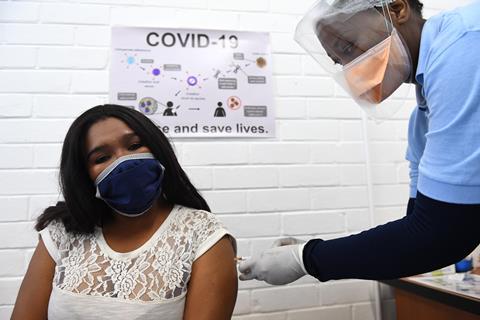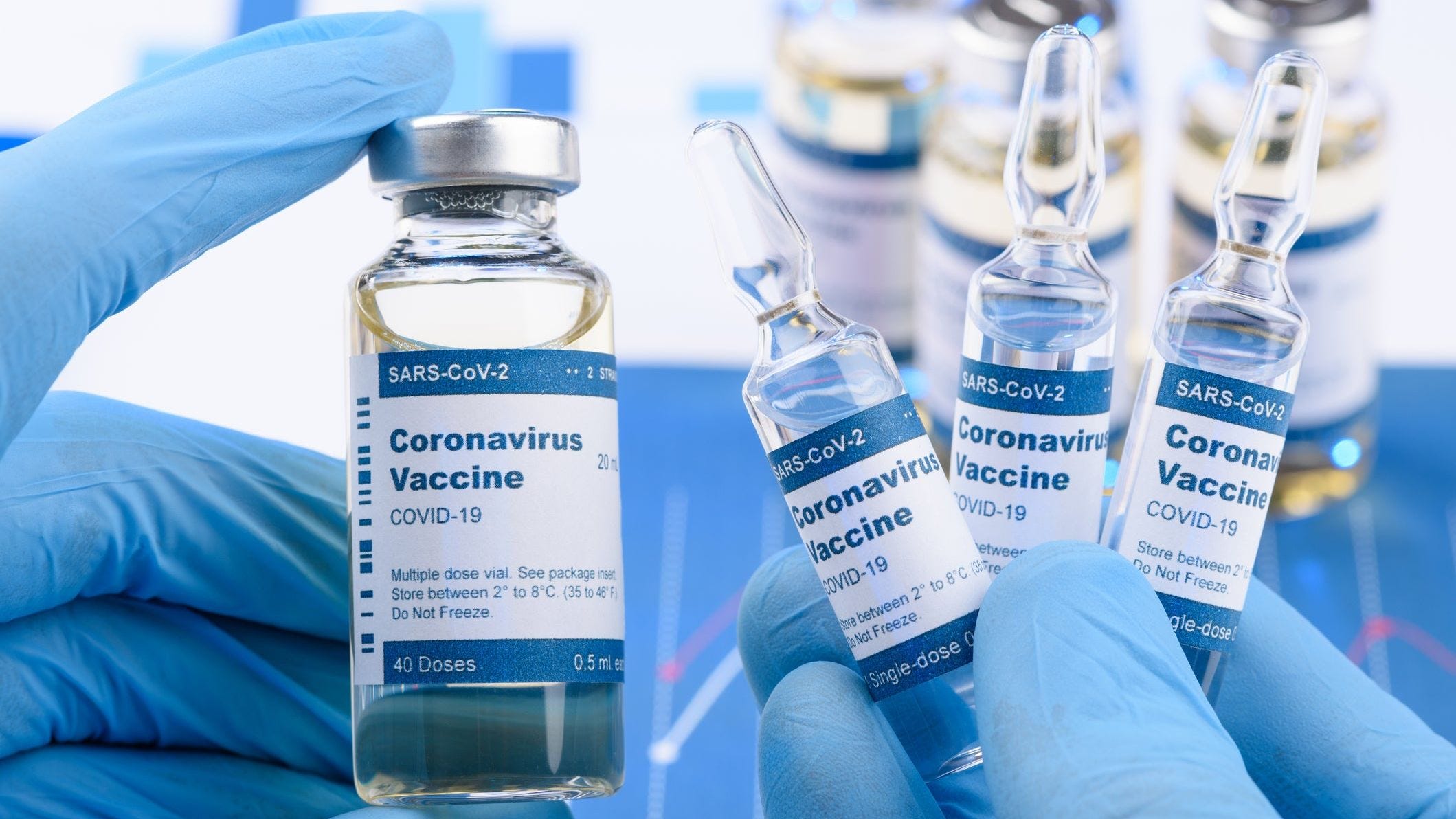It was the kind of statement that made you pause and look at the person wondering, “What on earth would prompt them to say something like that?” Unfortunately, this was a fairly regular occurrence. As someone who began every morning searching for the phrase “coronavirus vaccine” and reading the latest news articles, I became a bit of a junkie for all things vaccine and treatment. However, the types of things I would hear from my family, friends, and even random strangers were scary in how inaccurate they were. COVID-19 feeds off of misinformation. With a vaccine likely on the immediate horizon, there is a lot to learn about every aspect of vaccine development.
The vaccine development process occurs in many stages. Most of the testing of the vaccine occurs in the clinical development stage, which is further divided into three phases. Phase 1 is focused on making sure the vaccine is safe. Phase 1 data looks at the safety and correct dosages of the vaccine and whether or not it produces an immune response. Phase 1 trials are very small and may be limited to tens of people. Once Phase 1 data has been collected and looks promising, the vaccine can move onto Phase 2. Phase 2 consists of expanded trials involving hundreds of people to test the vaccine’s safety and ability to produce an immune response. If the data from this phase also indicates positive results, the vaccine then goes into Phase 3, the most important phase of clinical development. Phase 3 aims to test the efficacy of the vaccine through clinical trials conducted on thousands of people. To truly determine whether the vaccine offers protection, half of the testing group receives a placebo and the other half receives the vaccine, with participants not knowing which they received. Researchers then wait for cases to rise in the group and see whether the vaccine appeared to be effective at preventing disease. An important distinction is that participants are not intentionally infected with the virus at any point in what is called challenge trials. Currently, there are 46 COVID vaccines in clinical trials and another 91 in preclinical development being tested on animals.

Out of the 46 being tested in clinical trials, there are several noteworthy vaccines that have garnered a lot of media attention. Among them are:
Moderna, a US-based company, was the first to send its vaccine into clinical trials back in March. Its mRNA vaccine takes a new approach to vaccine design and would be a significant scientific achievement if approved. Moderna is currently in Phase 3 trials, which have been going on since July 27. The United States government has given it a lot of funding – initially $1 billion to work on the vaccine but also an additional $1.5 billion later on to secure 100 million doses of the vaccine for Americans. Canada also made a similar deal with Moderna to secure 20 million doses.
Like Moderna, this is another mRNA vaccine being tested by Pfizer, an American company; BioNTech, a German company; and Fosun Pharma, a Chinese company. In a combination of Phases 1 and 2, two versions of the vaccine were tested. Both caused volunteers to develop both antibodies and T cells. However, version BNT162b2 had fewer side effects associated with it, so it was selected to move onto a combined Phase 2 and 3 trial. Combined Phases 2 and 3 trials started on July 27 and are currently taking place around the world in the US, Argentina, Brazil and Germany. This vaccine is also the first American vaccine allowed to be tested on children. Given the late-stage in testing and positive results thus far, they may be able to apply for emergency use authorization in the US as early as late November. The United States has already paid $1.9 billion to secure 100 million doses by December and has the option to purchase an additional 500 million later on. Japan has also purchased 120 million doses and the EU has purchased 200 million doses too. Pfizer, BioNTech and Fosun Pharma have the goal of producing 1.3 billion doses by the end of 2021 for international use. Based on the results of Phase 3 trial data thus far, Pfizer anticipates applying for emergency use approval from the FDA in late November.
This Chinese vaccine takes a different approach to the previous two, basing its design around an adenovirus, which is a more traditional vaccine technique. After a Phase 2 trial yielded a strong immune response in trial volunteers, CanSinoBIO moved into Phase 3 testing in August in Saudi Arabia, Pakistan, and Russia. This vaccine is also notable because it has been approved for limited uses. On June 25, the Chinese military approved the vaccine to be used on soldiers.
The infamous Russian vaccine dubbed Sputnik V has created an international stir. Prior to any Phase 3 trials beginning, Putin approved the vaccine for widespread use. However, Russia has since backtracked from this August decision. Sputnik V is being tested in Phase 3 clinical trials. Additionally, the pool of participants was expanded from 2,000 to 40,000 and is currently being tested in Russia, Belarus, the United Arab Emirates and Venezuela. Once approved, Russia plans to supply Mexico, India and Brazil with the vaccine.
While Johnson & Johnson may have initially seemed behind some of its American peers, this vaccine is rapidly catching up. After a successful Phase ½ trial that started in July, a 60,000-participant Phase 3 began in September. However, on October 12, the trial was paused after an adverse effect was observed in a volunteer. Since then, the trial has resumed. Aside from an initial investment in the vaccine of $456 million, the government also paid $1 billion to purchase 100 million doses. In a similar deal, the EU bought 200 million doses. Johnson & Johnson aims to produce at least a billion doses in 2021. One thing that sets this vaccine apart is that it only requires one dose to be effective instead of the usual two. This would entail an easier rollout of the vaccine and less production struggles.
AstraZeneca, which is a British-Swedish company, and Oxford University are partnering together for this vaccine. Initial excitement around this vaccine resulted in an American investment of $1.2 billion for 300 million doses. AstraZeneca and Oxford also plan to supply the EU with 400 million doses as well. Overall, AstraZeneca and Oxford believe their total manufacturing capacity stands at 2 billion doses. Phase ½ trials of the vaccine were successful with no serious side effects showing up. Subsequently, Phase ⅔ trials were launched in Britain and India and Phase 3 trials were launched in Brazil, South Africa and the United States. On September 6, vaccine trials were halted after a participant experienced a form of inflammation. Internationally, trials resumed a week later, but the US kept the trial on pause for several weeks after that before finally allowing it to resume.
Novavax, an American vaccine development company, is another example of an American vaccine funded by the US government with a contribution of $1.6 billion. A Phase 3 trial was started in the UK with plans to expand into the US later on. Novavax aims to have final results by early 2021 and deliver 100 million doses to the US in the first quarter of 2021. Novavax also reached an agreement with the Serum Institute of India to produce up to 2 billion doses of its vaccine a year.
Sinopharm is another promising Chinese vaccine. It is currently being tested in Phase 3 trials in the United Arab Emirates and Argentina. It is also one of a select few of vaccines that have been approved for some use. The United Arab Emirates authorized the vaccine for emergency use on health care workers.
The last of the vaccines on this list is from another Chinese company. Sinovac is currently testing in Phase 3 trials in Brazil, Indonesia, and Turkey. It has also registered a Phase ½ trial for children, a consideration few vaccine-makers have taken thus far. In July, the Chinese government also approved the vaccine for emergency use. In addition to supplying China with vaccines, Sinovac plans to send 40 million doses to Indonesia by March 2021.
However, despite the promising results of vaccine trials around the world, vaccine skepticism has been increasing. Vaccine skepticism is an important obstacle to overcome because it undermines the goal of vaccines in achieving herd immunity. Herd immunity is when enough people in a population have immunity through antibodies or T-cells so that they can no longer contract the disease. Once herd immunity is achieved, spread of COVID-19 will be greatly reduced and this can usher in an end to the pandemic. Jennifer Reich, a sociologist at the University of Colorado Denver, sees vaccine skepticism as a push for people to take initiative of their own health. Only about half of Americans plan on getting the COVID-19 vaccine. Stark differences on racial lines exist when it comes to whether or not people are planning to get vaccinated. Black adults are far less likely to want to get vaccinated due to less access to medical care and less trust in the medical field. There is also a slight difference in the likelihood of getting vaccinated that run on political lines. A loose correlation exists between being Republican and questioning vaccines. The anti-vaxxer movement appears to be gaining traction in the United States. The basis of this movement is that vaccines cause autism, a phenomenon which has been disproven and should not be the basis of vaccine skepticism. Additionally, ridiculous conspiracy theories related to coronavirus vaccines have sprung up. A conspiracy that Bill Gates is trying to microchip the population through coronavirus vaccines has risen up. A YouGov poll found that 28 percent of people actually believed this theory. The conspiracy theory rose up because of statements Bill Gates had made about using digital certificates to track who had gotten vaccinated, not due to any actual plans he had to microchip the entire population. This conspiracy theory is completely unfounded, untrue and dangerous to the public health of society.
Another concern people have is that multiple vaccine trials in Phase 3, namely AstraZeneca/Oxford and Johnson & Johnson, were paused. Clinical trial experts tell us this should be less concerning because it shows that proper safety procedures are being followed. Pausing vaccine trials is not an unusual concept. It should not be something people are afraid of. Dr. Anna Durbin, a professor at Johns Hopkins, said that “in the vast majority of cases, the trial continues.” The FDA has allowed both the AstraZeneca/Oxford and Johnson & Johnson trials to resume, indicating they do not believe the overall safety of the vaccine is threatened by these events.
Still, even if people are not concerned about the vaccine, there are many questions as to how the COVID-19 vaccine process will go. This next section will aim to answer these questions.
What is the approval process for a COVID-19 vaccine?
After a vaccine gathers Phase 3 clinical trial data, the FDA will review the vaccine for approval. The FDA has placed the threshold that a COVID vaccine must be at least 50 percent effective. For context, the annual flu vaccine generally ranges from 19 percent to 60 percent effective. The WHO has warned that no vaccine is ever 100 percent effective but many experts believe the FDA threshold is too low to achieve herd immunity. These experts postulate that a vaccine will need to be closer to 70 percent effective in order to hit the key herd immunity threshold. Some states within the United States are instituting a separate review process in order for vaccines to be used in their state. California, Washington, Oregona nd Nevada will review an FDA-approved vaccine together and several other states such as New York, Michigan and West Virginia will independently review a COVID vaccine as well.
When will vaccines begin to be produced?
Vaccine production is already underway for many vaccine development and production companies. An example of this is that Pfizer has already produced hundreds of thousands of doses of its vaccine already. The goal is to have several million doses ready by the time the FDA approves the vaccine.
How will a COVID vaccine be distributed?
The US plan for distribution will require a national effort and extensive coordination to effectively vaccinate the majority of the population. Each state was required to submit their plan on how to distribute the vaccine by November 1. In the United States, the Department of Health and Human Services (HHS) plans to cover most costs associated with the vaccine. Several pharmacies such as Walgreens and CVS have also made deals with the HHS to distribute the vaccine. Funding is also needed to successfully distribute the vaccine. Robert Redfield, Director of the CDC, estimated that $6 billion will be needed to distribute the vaccine. Other trade groups have requested $8.4 billion to cover costs related to vaccine distribution.
The WHO has also created a separate plan for global vaccine purchasing and distribution, a plan which two-thirds of the world’s nations have signed onto. The WHO aims to end the worst part of the pandemic by the end of 2021. They plan to use a fair allocation mechanism which will occur in two phases. In the first phase, the vaccine will be distributed proportional to nations’ populations. The goal of this phase is to first immunize 3 percent of the population starting with health care and social care workers. After that, the first phase will work to immunize 20 percent of the population of all nations by focusing on high risk groups. The second phase will allocate vaccines based on each nation’s need. To determine how urgent a country’s need is, how fast the virus is spreading and how vulnerable the country’s healthcare system is will be assessed.
Many challenges to distribute vaccines are related to storage. Vaccines generally are kept at cold temperatures. Coronavirus vaccines will have to be kept below freezing and some vaccines may have to be administered within five days. Special storage facilities and procedures may need to be created in order for safe and effective vaccine distribution.
Where Are We Now in the Vaccine Development Process?
We are now entering into a very exciting phase of the vaccine development process where trial data on vaccine efficacy is beginning to come in. As of November 9, Pfizer announced that from the first analysis of Phase 3 data, its vaccine is over 90 percent effective. These types of results put Pfizer/BioNTech’s mRNA vaccine on par with some of the most highly effective vaccines for any disease. Pfizer plans to apply for emergency use approval in the third week of November following the completion of the collection of two months of safety data. This would mean vaccine roll-out could begin very soon, even before the end of the year. Similarly, this bodes well for Moderna, who uses a very similar mRNA vaccine. Moderna has begun evaluating efficacy results from their trial and hopes to share these results by the end of November.
Who Will Get the Vaccine First?
In the United States, the CDC has identified four groups that will receive priority for getting their COVID-19 vaccine: healthcare workers, essential workers, people with underlying medical conditions and seniors aged 65+.
When Will the Vaccine be Ready?
A COVID-19 vaccine is thankfully most likely on the near horizon. “According to Robert Wachter, chair of the department of medicine at the University of California at San Francisco, the US could have multiple vaccines by the year’s end.” Dr. Anthony Fauci has said that “we will know whether a vaccine is safe and effective by the end of November, beginning of December.” However, these early vaccines will not be available to the general public. Robert Redfield, director of the CDC, believes at the earliest the public will be able to get vaccinated in February but possibly later around July or August. Dr. Slaoui, the chief adviser on Operation Warp Speed, has said that Americans won’t be widely vaccinated until mid-2021. Dr. Fauci has estimated that people will be able to receive a COVID-19 vaccine by the end of April.
Will a Vaccine End the Pandemic?
No, by itself, a vaccine will probably not magically end the pandemic. In fact the first vaccines may provide only moderate protection when compared to later vaccines. There are two components to ending the pandemic: slowing community spread and achieving herd immunity. Ultimately, achieving herd immunity would sufficiently slow community spread to bring the pandemic to an end. In order to do this, the standard tools of wearing a mask and social distancing will still remain extremely important even for those who are already vaccinated. Other options to help halt the pandemic can include treatments being developed to treat COVID-19 so that infections are less likely to be deadly or cause lasting damage. However, the importance of getting vaccinated can not be stressed enough. Trust in science, wear your mask, get your vaccine as soon as possible and all of this can come to an end soon!






Comments are closed.